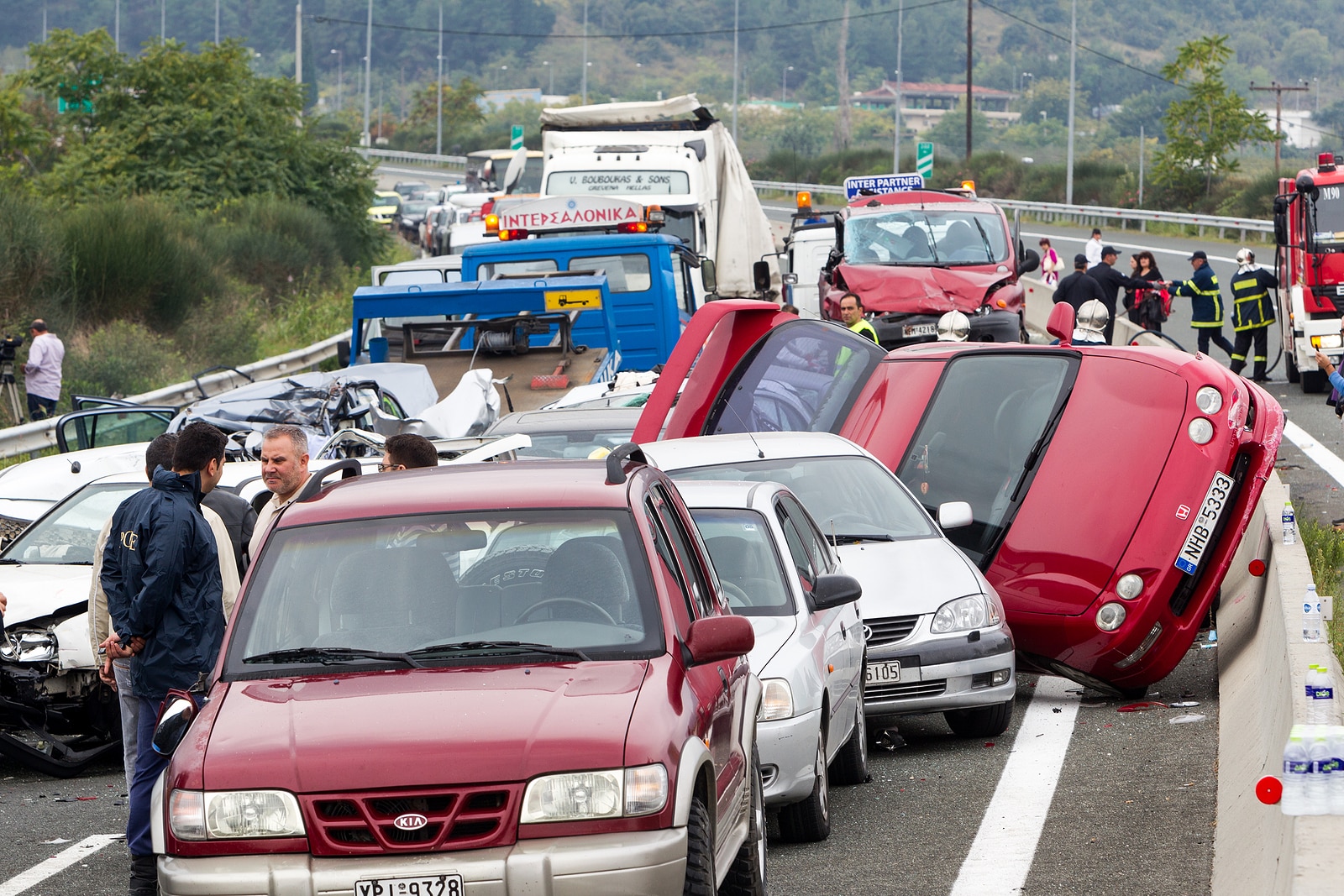Fault in Multi-Vehicle Accidents
Multi-vehicle accidents are inherently complex, often leaving those involved grappling with questions of responsibility and liability. Like many jurisdictions, St. Louis follows a systematic approach to determining fault in such incidents. A consultation with an attorney can be beneficial, as they provide guidance in navigating the legal process and protecting individual rights.
The Role of Police Reports
Following a multi-vehicle accident, law enforcement officers play an essential role by creating a detailed police report. Police officers act as neutral third-party observers. Their primary responsibility is to document the facts without bias. This neutrality is vital in providing an objective account of the incident, free from the emotional and subjective perspectives of those directly involved. This report becomes a foundation in the investigation, encompassing statements from involved parties, eyewitness accounts, and the officer’s on-scene observations. This comprehensive report is a starting point in determining fault.
Traffic Laws and Violations
The courts scrutinize the actions of each party involved in a multi-vehicle accident to assess whether any traffic laws were violated. Common violations include running red lights, failure to yield, improper lane changes, and exceeding speed limits. Committing such violations influences the allocation of fault, demonstrating a departure from legal driving behavior. St. Louis follows a negligence system where the parties involved in an accident are assigned a percentage of fault. In cases where multiple parties contribute to violating traffic laws, the court may assess each party’s degree of negligence. This approach allows for a determination of liability based on the extent to which each driver violated traffic regulations.
Driver Statements
Statements made by the drivers involved are considered in the fault determination process. Drivers often provide information about the factors they believe contributed to the accident. This might include weather conditions, road hazards, mechanical issues, or the actions of other drivers. Driver statements can shed light on the individuals’ intentions, such as whether they were attempting to yield, change lanes, or make a turn. Understanding the drivers’ intentions is crucial in determining if their actions align with or deviate from established traffic laws. However, it’s essential to acknowledge that these statements are subjective, representing the personal recollections and interpretations of the individuals involved in the accident. Courts often seek corroboration from other sources of evidence. The courts consider these statements alongside other forms of evidence, such as police reports and eyewitness testimony, to construct a well-rounded understanding of the events leading to the accident.
Eyewitness Testimony
Eyewitnesses provide independent accounts of the accident, offering a distinct perspective from the involved parties. Eyewitness testimony corroborates or challenges the narratives presented by the parties directly involved in the accident. Consistent accounts from multiple witnesses can strengthen the reliability of the information and help establish a clearer picture of the sequence of events. This impartial viewpoint is often considered valuable by the courts as it contributes to a more comprehensive understanding of the events leading up to the collision.
Expert Analysis and Accident Reconstruction
In complex cases, the expertise of accident reconstruction professionals may be utilized. Accident reconstruction is a specialized field that makes use of scientific principles, engineering expertise, and mathematical models to recreate the dynamics of a collision. These experts meticulously analyze the evidence to recreate the events leading to the accident, providing a scientific perspective that aids in determining fault.
Insurance Investigations
Insurance companies conduct their own investigations to determine liability and process claims. Their thorough assessment of liability, collaboration with law enforcement, and reliance on various sources of information contribute to a comprehensive understanding of the accident. As insurance companies play a central role in the financial aspects of recovery, the findings of these investigations have far-reaching implications for individuals seeking compensation and resolution in the aftermath of complex multi-vehicle accidents. The conclusions of these investigations may serve as additional evidence in court, shedding light on the responsible parties.
Comparative Negligence in Missouri
Missouri follows a comparative negligence system where each party involved in the accident is assigned a percentage of fault based on their degree of negligence. In multi-vehicle accidents, the court determines the percentage of fault for each party involved. This assessment considers the actions or negligence of each driver leading up to the accident. For example, if Driver A is 40% at fault and Driver B is 60% at fault, the court will allocate damages accordingly. The percentage of fault assigned to each party directly affects the damages they can recover. Missouri’s comparative negligence system allows drivers to seek compensation even if they were predominantly at fault. However, the amount of compensation is reduced by their percentage of negligence. For instance, if a party is 40% at fault, their recovery will be limited to 60% of the total damages. Comparative negligence requires a careful evaluation of each party’s actions, and the resulting fault allocations impact the legal and financial outcomes for all involved. As parties navigate the aftermath of a multi-vehicle accident in Missouri, understanding comparative negligence is essential in pursuing just and equitable resolutions.
Jett Accident & Injury Lawyers Provide Experienced Guidance Following a Multi-Vehicle Accident
Navigating the aftermath of a multi-vehicle accident in St. Louis requires a comprehensive understanding of the factors contributing to fault determination. Gathering evidence, consulting legal professionals, and being aware of the nuances of Missouri’s comparative negligence system are crucial for those seeking justice and fair compensation. The experienced team at Jett Accident & Injury Lawyers is here to guide you through the complexities of multi-vehicle accident claims and to fight for the compensation you deserve. Call us today at (314)789-3838 for a free case review. Our legal team is ready to listen, assess your case, and provide you with the guidance and representation you need.

 314-350-7076
314-350-7076




